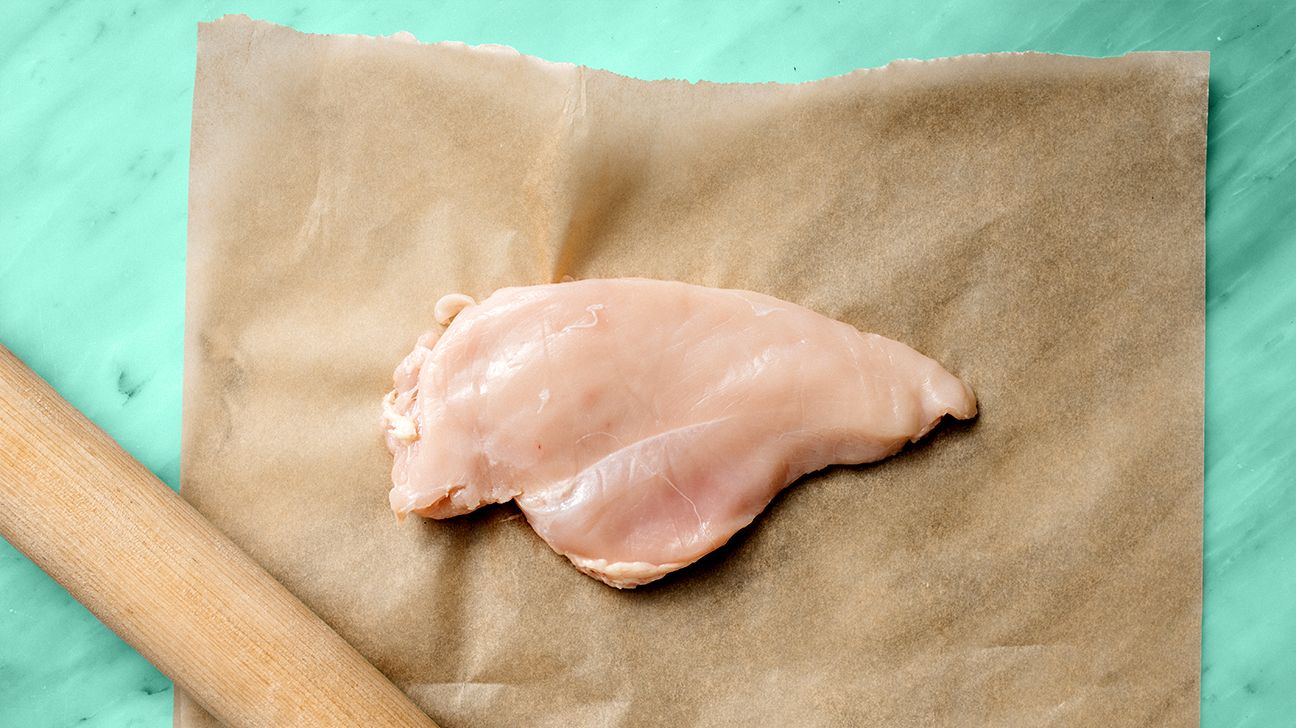Should you wash meat before cooking or freezing it? You’ve got questions, we’ve got answers.
Spoiler: The answers are mostly “no.” Here are the deets on why washing meat isn’t a good idea.
Nope. Washing packaged raw meat isn’t an effective way to reduce bacteria, and it could even make you more likely to get food poisoning.
Wondering how washing something can make it more likely to make you sick? Here’s the quick version:
- Raw meat may contain bad bacteria (aka foodborne pathogens).
- Anything meat touches while it’s still raw (like other foods, surfaces, or kitchen tools) could become contaminated with these bacteria.
- If you’re washing your meat under the faucet, the water can carry pathogens to your sink basin too.
Proper cooking will kill any bad bacteria in the meat and make it safe for you to eat. But any of those other surfaces that came into contact with the raw meat could still contain bacteria.

Washing meat made sense when you had to slaughter and prepare your own food. Today, meat gets cleaned when it’s processed, so you don’t need to wash it at home.
In fact, washing meat can be dangerous. Raw meat and poultry may be contaminated with harmful bacteria. Think: big baddies like Salmonella, Listeria, Campylobacter, and E. coli. These can all make you really sick.
When these bacteria spread to other surfaces, it’s called cross contamination. This increases your chance of getting food poisoning.
For example, if you pick up raw chicken with your hands, your hands become contaminated. If you use your hands to run that chicken under the water in your sink, your sink becomes contaminated. If you touch a spice bottle before thoroughly washing your hands, that spice bottle becomes contaminated. It happens fast!
Every one of those surfaces needs to be cleaned or you’ll risk spreading pathogens even further and increasing your chance of accidentally ingesting some of those bacteria.
FYI: Some studies suggest that acidic solutions like vinegar or lemon juice may help reduce the number of bacteria on raw meat, but it’s not clear if they can kill foodborne viruses. Cooking your meat to the proper internal temperature is still the best way to kill harmful bacteria.
Cross contamination is bad news, folks. And washing meat isn’t the only way it happens. Here are our best tips to prepare meat safely.
Wash your hands and kitchen tools
If you’re preparing meat, wash your hands really well after handling it. Why is this so important? Because unwanted germs can survive and thrive on your hands, kitchen tools, and countertops.
If the pandemic has taught us anything, it is that we can all use a handwashing tutorial. So if you’re still puzzled about how to properly wash your hands, check out our cheat sheet. Also, remember to wash your cutting boards, cutlery, and any other utensils you’ve used with hot, soapy water.
Keep ’em separated
Another helpful way to prevent cross contamination is to separate raw meat from other foods you’re storing or preparing. Here’s what that looks like:
- When grocery shopping, when storing meat in the fridge, and while meal preppin’, keep raw meat (and its juices) away from foods that won’t be cooked.
- If possible, use different cutting boards for raw and cooked foods (like one for veggies and fruit and another for meat and poultry).
- Never put cooked foods back on an unwashed plate that held raw meat.
Chill or freeze leftovers within 2 hours
Saving food for later? Make sure you put it in the fridge or freezer within 2 hours. Bacteria that causes food poisoning usually multiplies quicker at temps between 40°F and 140°F.
This means that to chill or freeze leftovers, you should keep your fridge at 40°F or below and your freezer at a max temperature of 0°F. While your freezer at home isn’t powerful enough to kill harmful germs, it can maintain that food’s safety until you cook it or heat it up.
Hit the right temp
Cooking your meat and poultry at the right temp is super important to kill harmful bacteria. According to the U.S. Department of Agriculture, meat and seafood are safe to eat only once they reach the following temps:
- Beef steaks, pork, and lamb: 145°F
- Fish and seafood: 145°F
- Ground beef: 160°F
- Poultry: 165°F
Pro tip: A food thermometer is worth the investment. It’ll help you measure the temp as accurately as possible so you don’t risk undercooking (or excessively overcooking) your supper.
Wash your veggies
You should def wash fruit and vegetables before eating them.
Raw fruits and veggies can carry dangerous bacteria (like Salmonella, E. coli, or Listeria) that might make you sick. Produce can pick up these bacteria as a result of animal contact, toxins in the soil, contaminated water, or poor hygiene during handling.
Replace that dirty kitchen sponge
Sponges are hands down one of the germiest items in your kitchen. Bacteria can easily grow in the moist and dark crannies of a sponge. Aim to disinfect sponges often and try to replace them every week.
- Washing raw meat doesn’t kill harmful germs, and it may actually lead to cross contamination and food poisoning.
- Lemon juice, vinegar, and other acidic solutions may help reduce bacteria in raw meat, but they don’t seem to combat harmful viruses.
- The best way to prevent cross contamination is to follow food safety measures like washing your hands and keeping cooked and raw foods separate when storing and cooking them.
- Other food safety tips include washing fruits and veggies and keeping your kitchen tools clean.

